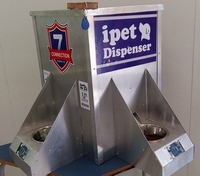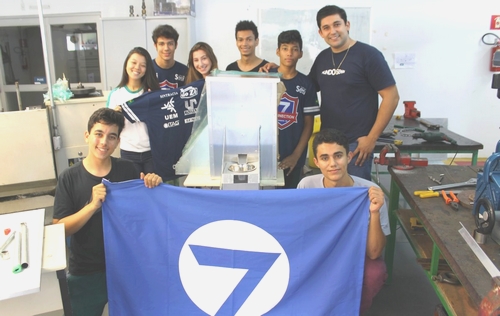Mar 23, 2017Anyone who has a dog, a cat or any other pet knows that a primary concern is to always be home at the right time to give that animal food. Any delay can hurt the animal or make it sick. With this in mind, a student at Colégio SESI de Cianorte suggested to his colleagues the creation of a machine that would feed animals automatically. The students researched radio frequency identification technology, which would allow for the individual identification of a particular animal—a dog, in this case—and the idea evolved into a project.
Thus was born the iPET intelligent feeder, which can determine which animal is near a trough and, provided that it is meal time, serve the right amount of feed, according to levels pre-set by that animal's owner. What's more, the device can inform the owner via smartphone that his or her pet is properly fed and has consumed water.
Following the project's conception, the development of the iPET has been carried out since 2013 by the 7th Connection team, comprising eight high school students and two technicians (teachers). One objective of the project is to compete in First Lego League (FLL), an international tournament staged in Brazil, promoted by toy manufacturer Lego.
The project generated technological demands that resulted in partnerships with the State University of Maringá's Department of Design (UEM), Paranaense University's Department of Information Technology (Unipar), Senai (the National Industrial Learning Service) and iTag (a provider of RFID technology).
"In the course of our work, we seek to be grounded in research with the community of pet owners and veterinarians," says Wesley Alanis, a professor and staff member. "We have seen that the dogs in our region are obese, which has made us align the work even more."
At the beginning of the project and following a survey, 7th Connection found that although there were power feeders available on the market, none allowed them to determine the amount of food being administered to each animal, nor did any offer an interface for sending and receiving SMS text messages or email to owners.
This, then, offered an opportunity for innovation, Alanis says. To produce such a personified machine, the team concluded that RFID technology was the best alternative. "Each smart tag contains the data of each dog," he explains, "as well as the specificities of its food."

The device connects to an open Internet of Things platform known as NodeMCU. "The machine is initially designed to fit a beagle, considered medium-sized and standard for some experts," Alanis says. "In this way, the programming was done to offer 400 grams of feed per day in four doses, so there are spaces of time in which, even with the RFID tag next to the device, the dog will not receive food. It's available at will and controlled by a level sensor, to inform the owner when the animal consumes liquid."
After months of preparation and course work, the group participated in the South Regional Stage of the FLL Robotics Tournament, held in Curitiba on Feb. 17-18, 2017. "Thanks to the commitment of all our team, especially the students, we managed to qualify for the national stage in Brasilia," Alanis reports. "In addition to qualifying, we were also given the Gracious Professionalism award—Lego's award for teamwork for professionalism and dedication."
The machine contains two RFID antennas, with which the feeder communicates with the animal's personalized tag, causing the machine to run if it is the correct time, and sending an email and SMS message to the owner stating that the dog has been fed and/or hydrated. For these functionalities, two Mifare kits were used, along with an MFRC522 RFID reader module based on an NXP Semiconductors RFID chip. The module operates at 13.56 MHz, with low power consumption and small dimensions, allowing for the contactless reading and writing of cards.
In addition to the tags, reader module, nodMCU and cellular interfaces, the team is studying the implantation of a sensor that would determine how much an animal has eaten from the quantity served, via a digital scale. "If there is more than one animal," Alanis notes, "the machine recognizes them, releasing the amount individually pre-set in the program."


